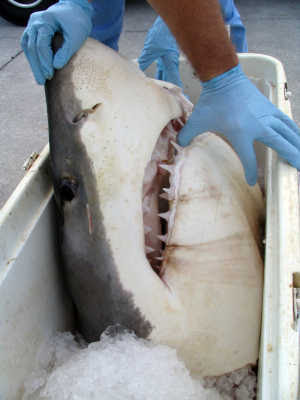
Los Angeles Dodgers fans who are worried about their team's lackluster recent history have nothing on Chicago Cubs supporters, who have endured a century-long championship drought.
Perhaps no postseason was more painful for the Wrigley faithful than 2003, when fan Steve Bartman appeared to interfere with a foul pop-up in the eighth inning of a potentially pennant-clinching Game 6 against the Florida Marlins, an act that set into motion a catastrophic collapse and the team missing the World Series.
Or did it?
Oscar-winner Alex Gibney ("Taxi to the Dark Side") explores the Bartman incident, the alleged Cubs curse and sports scapegoats in general in "Catching Hell," his new documentary that world-premiered at the Tribeca Film Festival on Saturday night.
"It came out of a personal pain," Gibney said in an interview after the premiere about his reason for making the film. The director, himself a die-hard Red Sox fan, went through a similar ordeal during Bill Buckner's flubbed ground ball in the '86 World Series, an event that gets ample airplay in this film.
"I lay awake for days after that happened. At some point, you think, 'It's only a game. It's not like anyone in your family is hurt, or like there's been an attack or an earthquake,' " he said. "But I was still stunned and devastated, and I wanted to examine that."
In the film, which will premiere on ESPN later this year and possibly get a theatrical release, Gibney interviews numerous fans who sat near or comment on Bartman, uncovered rare footage from the game and even re-creates what Batman was hearing on the radio's seven-second delay as he watched the fly ball come at him.
He concludes Bartman was not nearly as responsible for the loss as the reaction from the fans, angry and in search of a scapegoat, suggested. Many other hands had reached up for the ball, and even had Cubs outfielder Moises Alou caught the pop-up, a series of key miscues on the field played a far more important role in the subsequent collapse.
Most interestingly, he paints a picture of Bartman -- immortalized as the laconic, headphones-wearing fan in a green turtleneck who was hustled out of the stadium amid death threats -- as a tragic and even mythic figure.
"In the Odyssey, when Odysseus blinds the Cyclops, [the Cyclops] goes to his mutant friends and tells them 'No Man' did it, and his friends say, 'Well, it must have been the gods,' " Gibney said. "Bartman, in a way, is a kind of No Man. So he must be the gods." The fan, who has since declined all requests for public appearances and interviews, including Gibney's, was just as devastated about the Cubs loss as the people whose hearts he supposedly broke. But he has all but gone into hiding in the nearly eight years since the incident.



























































